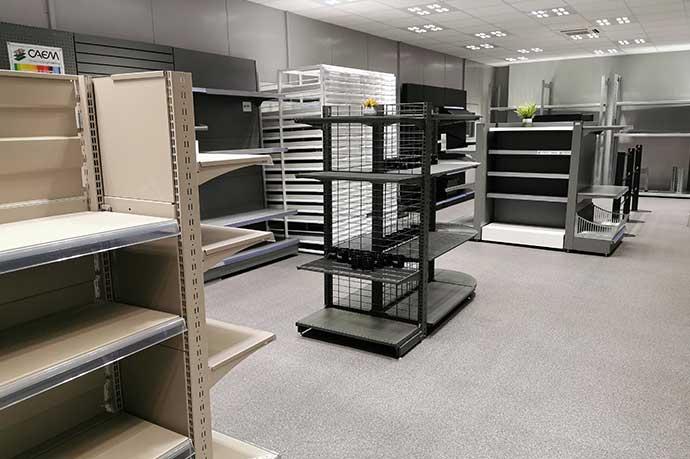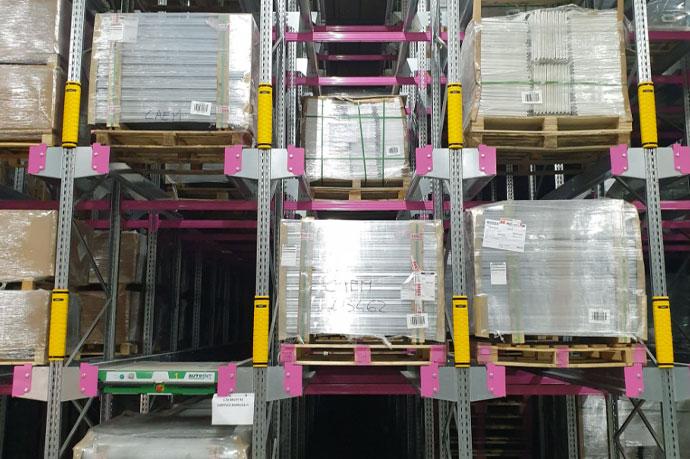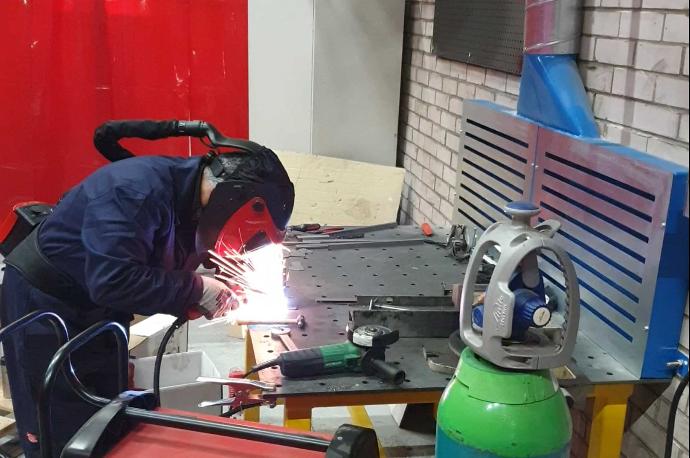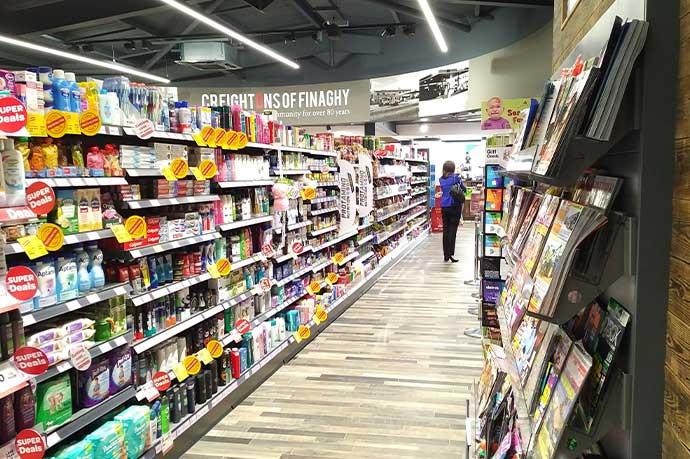Modern healthcare demands more from its storage solutions than ever before. The humble medical cabinet has evolved, now standing at the crossroads of security, efficiency, and innovation. As facilities strive for safer medication management and streamlined operations, the right choice in medical cabinets can make a marked difference—whether in a bustling hospital, a local pharmacy, or a private clinic.
The medical storage cabinet market reflects this growing importance, with projections showing growth from $900 million in 2023 to $1.5 billion by 2032, representing a robust compound annual growth rate of 5.5%. This expansion is driven by healthcare facilities increasingly recognizing the critical role of advanced storage solutions in patient safety and operational efficiency.
Diving into Medical Cabinets: Your Comprehensive Guide
Understanding Medical Cabinets: An Introduction
What Are Medical Cabinets?
Medical cabinets are purpose-built storage units designed to securely organise, store, and protect medical supplies, medications, and related equipment across healthcare, pharmacy, and workplace environments. These units range from wall-mounted and floor-standing to fully modular systems, all constructed with robust materials that prioritise both durability and hygiene. Adjustable shelving, reinforced doors, and secure locking mechanisms are standard, reflecting their dual role: keeping critical items accessible for authorised staff, while ensuring safety and regulatory compliance.
Key Purposes and Functions
At their core, medical cabinets facilitate efficient storage and easy retrieval of medical items, streamlining workflows and reducing clutter. By segregating general medicines, controlled substances, and first aid supplies, these cabinets help maintain order and reduce the risk of medication errors. Security features—ranging from lockable medicine cabinets to advanced audit trails—ensure only authorised access, supporting both compliance and accountability. Their design ultimately underpins a clean, organised, and safe workspace, which is vital for effective patient care.
The Importance of Medical Cabinets in Healthcare Settings
Organising Medical Supplies
Well-designed medical cabinets play a pivotal role in daily healthcare routines. Adjustable shelves and compartmentalised layouts allow staff to tailor storage for specific needs, whether for high-turnover medications or rarely used emergency supplies. This approach not only speeds up restocking and retrieval but also reduces the chances of misplaced or expired stock, ensuring that vital medicines are always within reach when needed.
Recent implementation studies demonstrate the tangible benefits of proper medical storage systems. At China Medical University Hospital, a comprehensive rollout of automated dispensing cabinets resulted in statistically significant reductions in dispensing error rates, while multiple hospitals in Saudi Arabia's Al-Hasa region reported high staff satisfaction scores of 4 or above out of 5 following smart cabinet implementation.
Ensuring Safety and Compliance
Security is non-negotiable in healthcare storage. Cabinets must protect sensitive and potentially hazardous items, particularly controlled drugs, from unauthorised access. Reinforced construction, tamper-evident seals, and high-security locks are essential for meeting regulatory requirements. Clear labelling and access controls further enhance traceability, helping facilities comply with national guidelines and reduce risks associated with misuse or theft.
Regulatory Compliance: Meeting Essential Standards
FDA and International Requirements
Healthcare facilities must navigate complex regulatory landscapes when implementing medical storage solutions. In the United States, FDA 21 CFR Part 1304 mandates specific requirements for controlled substance storage, including lockable compartments, tamper-evident mechanisms, and detailed record-keeping for inventory, dispensing, and disposal.
Medical cabinets must also comply with 21 CFR Part 880, which classifies hospital and personal use devices, establishing basic safety and performance standards for storage cabinets intended for human use. The updated Quality System Regulation aligns with ISO 13485:2016 standards, requiring comprehensive design controls, risk management, and documentation for medical device manufacturing.
European Union Standards
Within the European Union, medicine cabinets classified as medical devices must meet EU MDR (Medical Device Regulation 2017/745) requirements, including essential safety and performance requirements, comprehensive technical documentation, risk management processes, CE marking, and ongoing post-market surveillance.
Key Compliance Checklist
Healthcare facilities must ensure their medical cabinets meet several critical requirements. Cabinet security features must include lockable and tamper-evident compartments with appropriate access controls such as keys, biometrics, or PINs. Environmental controls require temperature monitoring systems for sensitive medications with alarms for temperature excursions or unauthorised access.
Inventory management must comply with 21 CFR Part 1304 for controlled substance records, featuring automated or manual tracking of stock levels, dispensing, and wastage. Regular audits and staff training ensure ongoing compliance with both FDA QSR/cGMP and EU MDR standards.
Types of Medical Cabinets: A Detailed Overview
Simple vs. Controlled Drugs Cabinets
Differences and Unique Features
Simple medical cabinets, often called medical cupboards, are designed for everyday supplies and over-the-counter medications. Their security features—typically key locks or basic latches—are sufficient for general access. In contrast, controlled drugs cabinets are built to a much higher specification, with double-skinned doors, heavy-duty locks, and compliance with strict legal standards. The difference in construction and locking mechanisms reflects the sensitivity and legal status of the contents.
Applications in Various Settings
Simple cabinets are widespread in schools, care homes, and workplaces where general medical storage is required. Controlled drugs cabinets are a legal requirement in pharmacies, hospitals, and veterinary practices, safeguarding regulated medications. Some hybrid cabinets offer separate compartments for general and controlled items, combining convenience with robust security.
Categories of Medical Cabinets Based on Size
Small, Medium, Large, and Extra-Large Cabinets
Medical cabinets come in a spectrum of sizes, each tailored to specific needs. Small units—often wall-mounted—are perfect for first aid or low-volume storage. Medium and large cabinets accommodate broader inventories, while extra-large models are indispensable in hospital wards or central supply rooms. CAEM's modular solutions, such as the D25 and DC4 Drawer Cabinets, allow for custom sizing and configuration, ensuring every facility finds the right fit.
Best Uses for Each Size
Compact cabinets excel in consultation rooms and mobile settings where space is at a premium. Medium options suit clinics and smaller pharmacies, balancing capacity and accessibility. Large and extra-large cabinets support high-volume environments, offering comprehensive organisation and secure access to a wide range of medical supplies.
Digital vs. Traditional Cabinets
Technology Enhancements in Modern Cabinets
The rise of digital technology has transformed the secure medical cabinet. Electronic locks, audit trails, and access control systems are increasingly common, providing advanced security and real-time monitoring. Integration with facility management software or IoT platforms enables automated inventory tracking, remote access, and alerts for unauthorised entry. CAEM's automated dispensing cabinets, equipped with electronic controls, biometric authentication, and barcode scanners, exemplify this trend towards smarter storage.
Market adoption reflects this technological shift, with the broader medical cabinets market expected to reach $158.39 billion by 2031, driven by a compound annual growth rate of 6.34% between 2024 and 2031. The U.S. medical carts market specifically is projected to reach $2.02 billion by 2030, expanding at an impressive 12.4% CAGR, reflecting increased adoption of digital and mobile solutions in healthcare environments.
Pros and Cons of Each Type
Digital cabinets bring heightened security and efficiency, but require ongoing maintenance and power sources. Traditional models, relying on mechanical locks, are cost-effective and simpler to maintain, though they may lack the advanced features now standard in many healthcare settings. Choosing between them depends on regulatory needs, security priorities, and budget.
Real-World Success Stories: Case Studies from Healthcare Facilities
China Medical University Hospital Implementation
China Medical University Hospital, a large 2,202-bed academic medical center, provides compelling evidence of automated cabinet effectiveness. Their staged rollout of automated dispensing cabinets from 2017 to 2023 resulted in quantifiable reductions in dispensing error rates, with studies confirming statistically significant improvements in medication safety following system integration. The implementation also enabled real-time medication monitoring and inventory reduction, helping prevent diversion and loss.
Multi-Hospital Success in Saudi Arabia
Multiple hospitals in Saudi Arabia's Al-Hasa region demonstrated strong operational acceptance following automated dispensing cabinet deployment in 2024. Healthcare staff reported high satisfaction scores of 4 or above out of 5, particularly regarding efficiency, system usability, and perceived improvements to medication safety. The implementation led to increased frequency and standardized use of ADCs, streamlining medication distribution and reducing manual handling.
Cost-Benefit Analysis and ROI Considerations
Healthcare facilities implementing automated systems consistently report measurable benefits beyond initial investment costs. Large healthcare systems using RFID-enabled automated dispensing cabinets observed faster medication retrieval times and better staff allocation, translating to quantifiable workflow efficiency gains and operational cost reductions.
Key ROI drivers include improved workflow efficiency through reduced manual inventory time, enhanced compliance and tracking capabilities, decreased error rates and contamination risks, and improved overall patient and staff safety. While specific dollar-value returns vary by facility size and implementation scope, the documented trend toward higher growth rates in automated segments suggests superior returns compared to traditional manual systems.
Selecting the Right Medical Cabinet for Your Needs
Factors to Consider When Choosing a Medical Cabinet
Space and Storage Requirements
Begin by assessing your available space and anticipated storage volume. Modular designs, like CAEM's D25 drawers, offer flexibility for future expansion and adaptation, making them an ideal choice for evolving healthcare environments.
Material and Durability
Opt for cabinets constructed from high-quality, hygienic materials—powder-coated steel or antimicrobial finishes are excellent choices. CAEM's products are engineered for durability, with reinforced doors and robust hinges to withstand the demands of busy clinical settings.
Locking Mechanisms and Security Features
Security should match the risk profile of stored items. Options range from basic locks on standard medicine cabinets to advanced electronic systems with audit trails and alarms. Features such as double-skinned doors and tamper-proof fittings ensure compliance and protect against theft or misuse.
Tailored Solutions for Specific Environments
Hospital and Clinical Needs
Hospitals and clinics require a variety of cabinet types and sizes to manage everything from general supplies to tightly controlled drugs. Integration with workflows and compliance with healthcare regulations are paramount. CAEM's high-density storage solutions, such as the DC4 Drawer Cabinets with smooth-glide, self-closing drawers and modular configurations, address these diverse needs.
Pharmacy and Personal Use
Pharmacies benefit from cabinets that combine high-volume storage with secure segregation for controlled substances. CAEM's Medidrawer system, with its 8cm high pull-out drawers and adjustable dividers, supports efficient, high-density medicine storage and retrieval. For personal or workplace first aid, accessible and well-organised cabinets are key, often featuring colour-coded compartments or transparent acrylic risers for easy visibility.
Installation and Maintenance of Medical Cabinets
Step-by-Step Installation Guide
Essential Tools and Precautions
Successful installation requires careful planning. Tools such as drills, screwdrivers, and high-strength fixings are standard. Always refer to the official CAEM installation guides specific to your product model to ensure correct assembly and compliance with safety standards. Secure cabinets to structural supports, not just drywall, and use a spirit level to guarantee alignment.
Common Challenges and How to Overcome Them
Obstructions behind walls—like pipes or wiring—can complicate installation, particularly for recessed cabinets. Level, load-bearing surfaces are essential, and professional assistance may be needed for larger units. Matching cabinet mounting to existing infrastructure, especially in older buildings, may call for creative reinforcement or bespoke solutions.
Regular Maintenance Practices to Ensure Longevity
Maintenance Schedule and Checklist
Establish a comprehensive maintenance routine to maximize cabinet lifespan and ensure continued compliance. Weekly cleaning with mild, non-abrasive detergents preserves cabinet surfaces and maintains hygiene standards. In clinical settings, daily disinfection with medical-grade solutions is essential, paying special attention to handles, locks, and high-touch areas.
Monthly inspections should systematically check for loose fasteners, worn hinges, malfunctioning locks, and any signs of damage or wear. Test electronic components including access control systems, alarms, and monitoring features to ensure proper operation. Document all maintenance activities and promptly address any issues to maintain security and functionality.
Troubleshooting Common Issues
Common cabinet problems include door alignment issues, lock mechanisms becoming stiff or unresponsive, and electronic system malfunctions. Keep detailed maintenance records for warranty claims and regulatory compliance. For advanced digital systems, establish relationships with qualified service technicians and maintain spare parts inventory for critical components.
Trending Innovations and Future of Medical Cabinets
Integration with Smart Technologies
IoT and Smart Security Features
Smart technologies are reshaping medicine storage across healthcare facilities. IoT-enabled cabinets offer real-time monitoring, cloud-based inventory management, and automated alerts for unauthorised access. The adoption of features like RFID tags, biometric authentication, and integrated sensors is accelerating as hospitals seek greater efficiency and compliance.
Market data supports this technological evolution, with smart cabinet technologies closely tied to rising Electronic Medical Records implementation and telemedicine adoption in hospitals. Healthcare facilities are increasingly demanding solutions that integrate seamlessly with existing IT infrastructure while providing enhanced security and operational visibility.
Benefits of Automation in Health Settings
Automation delivers measurable improvements in healthcare storage management. Large healthcare facilities report reductions in medication errors and improved inventory control following automated system implementation, while RFID-enabled solutions provide automated logging and alerts for discrepancies, further improving medication security.
Features like audit trail-enabled smart locks and automated alerting for unusual access attempts are now standard, supporting both workflow efficiency and stringent security requirements. The integration of these technologies represents a fundamental shift from reactive to proactive medication management.
Sustainable and Eco-Friendly Cabinet Options
Materials and Manufacturing Trends
Sustainability is gaining ground in cabinet manufacturing as healthcare facilities prioritize environmental responsibility. Recycled aluminium, responsibly sourced timber, and low-impact plastics are now widely used, reflecting a shift towards eco-friendly production. Energy-efficient manufacturing processes further reduce environmental impact without compromising on durability or security.
Balancing Functionality with Environmental Impact
Today's sustainable cabinets maintain high standards for hygiene, security, and longevity while reducing their ecological footprint. The healthcare sector's move towards greener procurement ensures that future cabinet solutions will balance environmental responsibility with uncompromising functionality, supporting both patient care excellence and broader sustainability goals.
Frequently Asked Questions
What are the key differences between controlled drug cabinets and standard medical cabinets?
Controlled drug cabinets feature double-skinned construction, high-security locks, and compliance with strict legal standards for storing regulated medications. Standard medical cabinets use basic locks and are designed for general medical supplies and over-the-counter medications.
How do I ensure my medical cabinet meets regulatory compliance requirements?
Ensure cabinets meet FDA 21 CFR Part 1304 requirements for controlled substances, including lockable compartments and tamper-evident mechanisms. For EU facilities, verify EU MDR compliance including CE marking and comprehensive documentation.
What maintenance schedule should I follow for medical cabinets?
Perform weekly cleaning with appropriate disinfectants, monthly inspections of locks and hinges, and quarterly testing of electronic systems. Document all maintenance activities and address issues promptly to maintain security and compliance.
How do automated cabinets compare to traditional systems in terms of ROI?
Healthcare facilities implementing automated systems report faster medication retrieval times, better staff allocation, and operational cost reductions. Key benefits include reduced errors, improved compliance, and enhanced workflow efficiency, though specific ROI varies by facility size and implementation scope.
What size cabinet do I need for my healthcare facility?
Cabinet sizing depends on storage volume, available space, and specific applications. Small wall-mounted units suit consultation rooms, medium cabinets work well for clinics, while large facilities require comprehensive storage solutions with modular expansion capabilities.
For over 30 years, CAEM has led the way in providing secure, stylish, and modular medical storage solutions. From innovative drawer systems like D25 and Medidrawer to advanced automated dispensing cabinets, CAEM's offerings reflect a deep understanding of healthcare needs and a commitment to continuous improvement. Explore CAEM's full range of medical cabinets and storage solutions to discover how tailored, robust, and future-ready designs can transform your facility's approach to medicine storage and safety.





